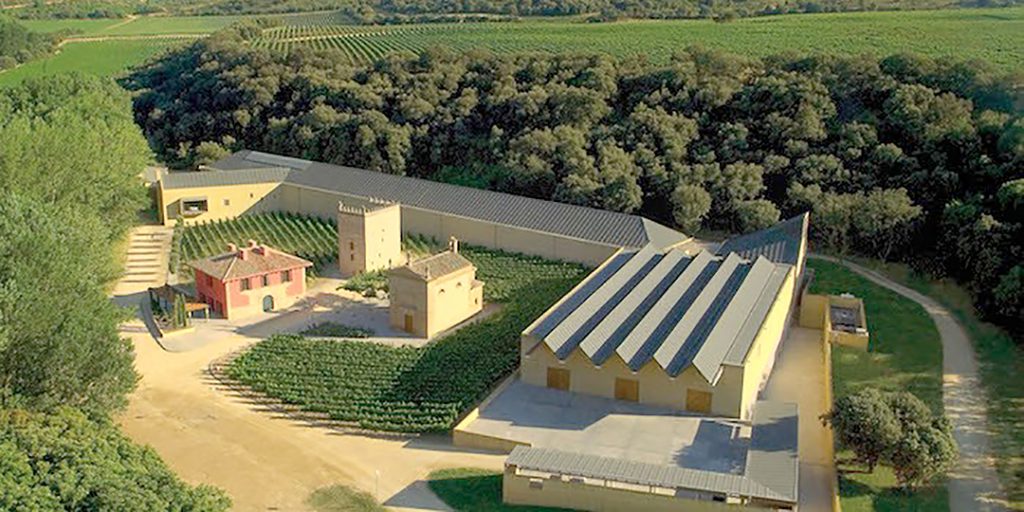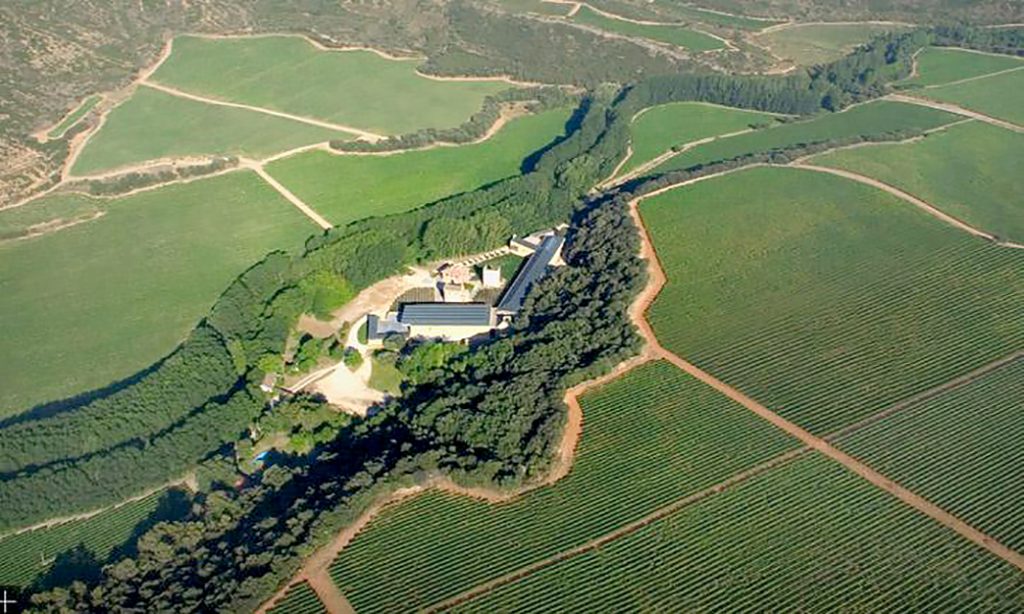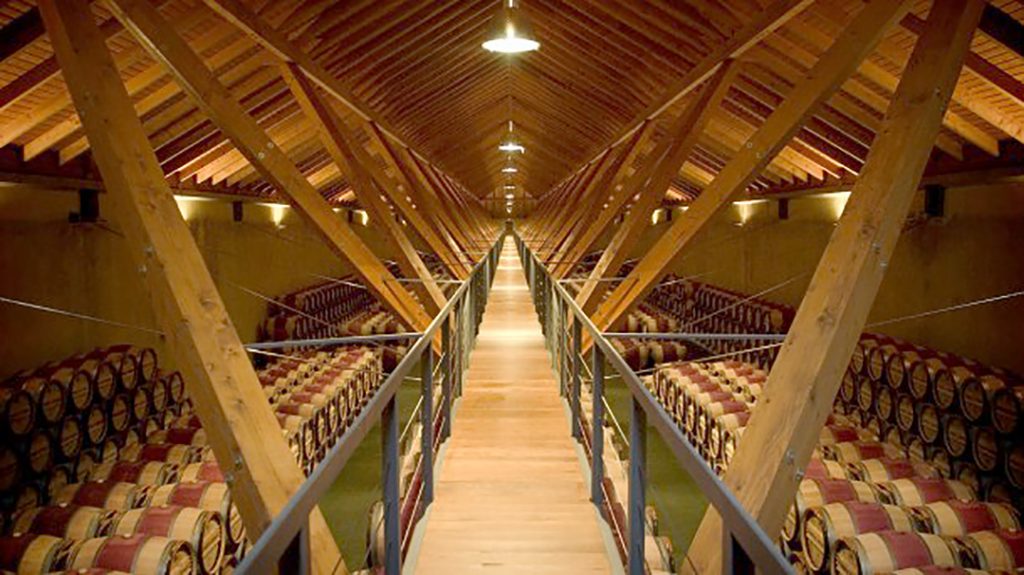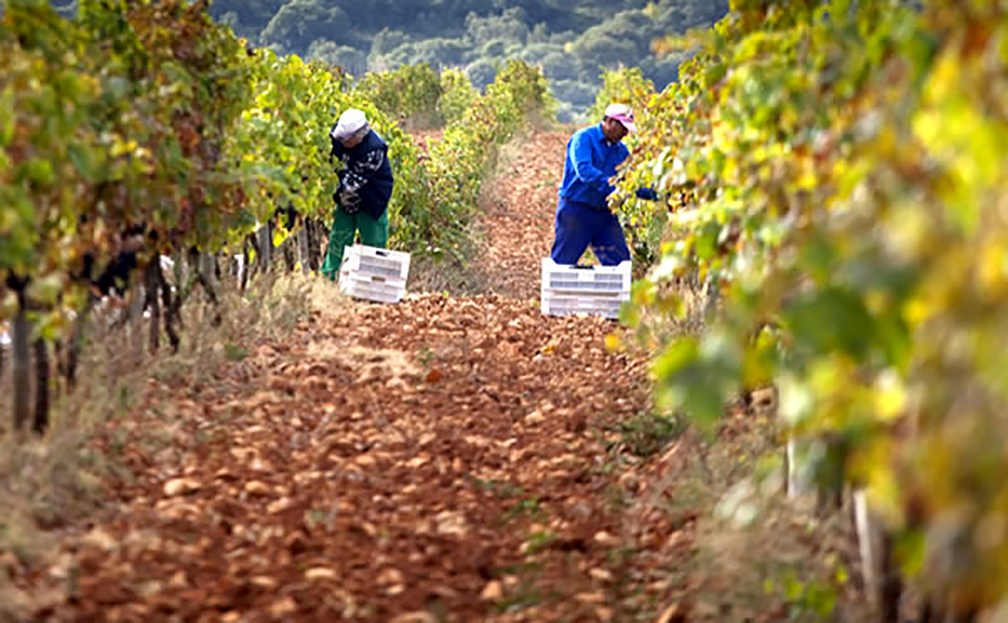Medium ruby color; cherry, boysenberry on the nose; cherry, blackberry, redcurrant, chocolate, vanilla, toast, dried fig on the palate.
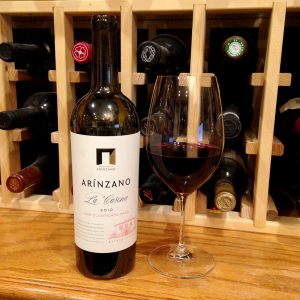
Dry; big-time Spanish wine from premier region—Pago is the highest wine classification in Spain. You know this is serious wine when the label recommends cellaring and decanting (which I did) and the bottles are seven years old before being sent to reviewers.
Blend of 75% tempranillo, 25% merlot. Silky tannins—neither tempranillo nor merlot bring big tannin to the table, and seven years also does its thing. Impressive depth, still fresh after all the years. You expect tempranillo to have sour cherry notes, but this does not, perhaps from the aging and decanting, perhaps from the premier terroir, but these are simply delicious, dense cherry flavors. In any event, a very serious, elegant Spanish effort also can be called an easy drinker with delightful mouthfeel and layers of flavors extending through an impressive finish.
Vino de Pago is a Spanish wine classification introduced in 2003. Unlike Denominación de Origen (DOC) or Denominación de Origen Califcada (DOCa), which applies to an entire wine region, the Vino de Pago designation applies to a specific vineyard and represents the highest quality in Spanish wines. The requirements are similar to the strict DOCa specifications, but they also indicate the estate only uses its own grapes in the wine. Arinzano was the fifth to earn the designation and is the largest. There are only 17 in Spain, ranging from less than 40 acres to Arinzano’s 316 acres—still a tiny portion of the nation with the largest acreage of grapes in the world.
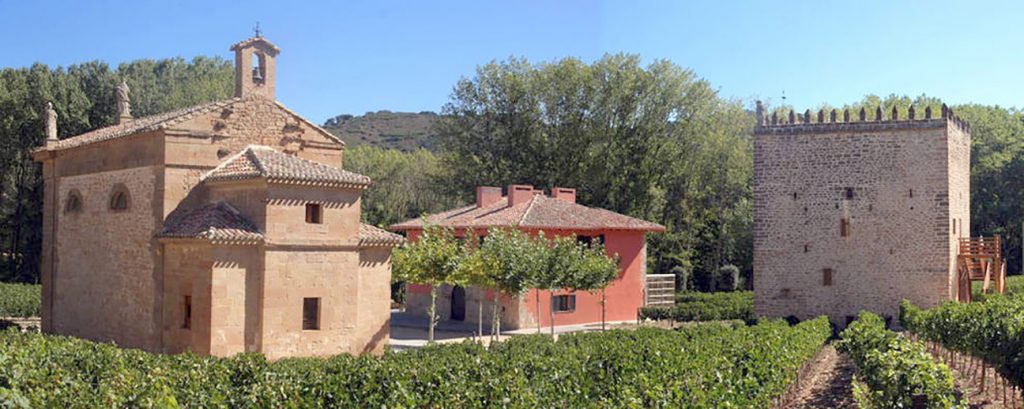
Reflective of commitment to special soil and environment, Arínazano reached out to the World Wide Fund for Nature for help in guaranteeing a sustainable and environmentally responsible vineyard; the result was “The Programme for the Conservation of Nature at the Property of Arínzano” that involved a rigorous inventory of the flora and fauna and a sustainable management program to address the situation. Arízano’s effort revolves around four areas: conservation and restoration of the natural environment—half the estate is reserved for self-generated flora and fauna; organic viticulture; and integrated pest control; use of only certified environmental materials in construction of the winery; and natural waste water filtration through a series of lagoons.
The Señorío de Arínzano estate is located in northeastern Spain between Rioja and Bordeaux in the last slopes of the Pyrenees mountains, divided by the winding waters of the Ega River. The total estate is more than 877 acres, with 316 dedicated to vineyards. Wine has been produced in the area since the 11th century, but the vineyards were abandoned for almost two centuries until they were revived in 1988. Historic buildings were rehabilitated and a new winery constructed. At the turn of the 21st century, the king and queen of Spain attended the inauguration of the Arínzano winery designed by world-renowned architect Rafael Moneo, whose work includes the Prado Museum extension in Madrid, the Los Angeles Cathedral of the Angles, and the Stockholm Museum of Modern Art.
Arínzano La Casona Vino de Pago 2010 is a seriously good wine, representative of how Spanish wines are such good values. Silky in the mouth with depth and delicious fruits. If you can find this wine at your wine store or online, give it a shot. Punches well above its price. Pair with range of foods thanks to its excellent acidity, but red meat will be the wheel horse for this impressive effort; also lasagna, pizza, and dishes with tomato-based sauces, chile rellenos, polenta and other corn-based dishes, hamburgers. Does not do well with fish, especially lighter fish, and most cheeses. $36-40
